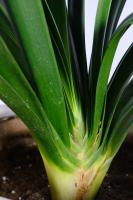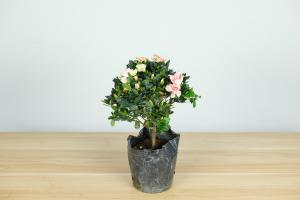What to Plant Between Tree Roots
Tree roots can often create challenges when planning and designing a landscaping project. However, with careful consideration and planning, you can use the space between tree roots to grow a variety of plants and add depth and texture to your outdoor space. In this article, we'll explore some of the best options for planting between tree roots.
Considerations Before Planting
Before selecting plants to add between your tree roots, there are a few important factors to consider. First, consider the amount of light the area receives. If the area is fully shaded, plants that require full sun may struggle to grow. Similarly, if the area is exposed to full sun, shade-loving plants may not thrive. Secondly, it's important to think about the soil conditions in the area. Soil quality can vary greatly based on factors such as tree species, age, and root density. Lastly, consider the density of tree roots, as well as the proximity to the trunk. Roots that are too close to the trunk can cause competition for nutrients and water and may ultimately harm the tree itself.
Ground Covers
Ground covers are a great option for planting between tree roots as they can help control erosion and maintain soil moisture. Creeping Jenny, also known as Moneywort, is a popular choice as it's a low maintenance ground cover that can spread quickly. Other options include Hostas which are known for their large, attractive foliage and can tolerate some shade. Ajuga, also known as Carpet Bugleweed, is another popular option as it can survive in both shaded and partially shaded areas.
Perennials
Perennials are a great option for planting between tree roots as they require less maintenance than annuals and can come back year after year. Bleeding Hearts are a popular choice for shaded areas and are known for their unique heart-shaped flowers. Hostas, as mentioned earlier, are also a great option for partially shaded areas. Daylilies are another popular perennial option as they can grow in full sun and shaded areas and come in a variety of colors.
Ferns
Ferns are a great option for planting between tree roots as they thrive in shaded areas and require little maintenance. Christmas Ferns, named for their ability to survive well into the winter season, are a popular option as they can grow in both full shade and partially shaded areas. Maidenhair Ferns are another great option as they can tolerate some direct sunlight and add a unique texture to your landscaping design.
Conclusion
Planting between tree roots can be a challenge, but with a little consideration and planning, you can create a beautiful and thriving outdoor space. Ground covers, perennials, and ferns are all great options that can add texture and depth to your landscaping design. Don't be afraid to experiment with different plant combinations and see what works best for your unique outdoor space.

 how many times do yo...
how many times do yo... how many planted tre...
how many planted tre... how many pine trees ...
how many pine trees ... how many pecan trees...
how many pecan trees... how many plants comp...
how many plants comp... how many plants can ...
how many plants can ... how many plants and ...
how many plants and ... how many pepper plan...
how many pepper plan...






























